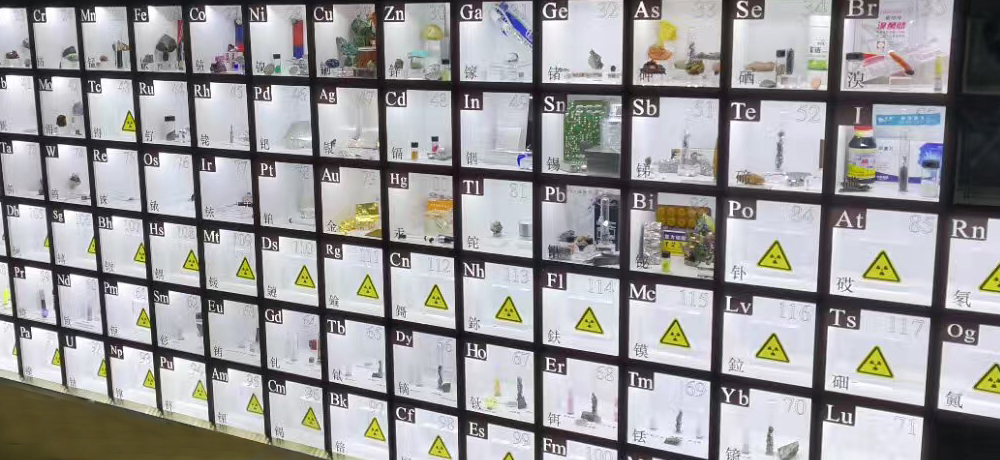Lanthanides sevies
The lanthanide series of chemical elements comprises the fifteen metallic chemical elements with atomic numbers 57 through 71, from lanthanum through lutetium.These fifteen lanthanide elements, along with the chemically similar elements scandium and yttrium, are often collectively known as the rare earth elements.
The informal chemical symbol Ln is used in general discussions of lanthanide chemistry to refer to any lanthanide. All but one of the lanthanides are f-block elements, corresponding to the filling of the 4f electron shell; depending on the source, either lanthanum or lutetium is considered a d-block element, but is included due to its chemical similarities with the other fourteen.All lanthanide elements form trivalent cations, Ln3+, whose chemistry is largely determined by the ionic radius, which decreases steadily from lanthanum to lutetium.
They are termed lanthanides because the elements in the series are chemically similar to lanthanum. Strictly speaking, both lanthanum and lutetium have been labeled as group 3 elements, because they both have a single valence electron in the 5d shell. However, both elements are often included in any general discussion of the chemistry of the lanthanide elements. Lanthanum is the more often omitted of the two, because its placement as a group 3 element is somewhat more common in texts and for semantic reasons: since “lanthanide” means “like lanthanum”, it has been argued that lanthanum cannot logically be a lanthanide, even though IUPAC acknowledges its inclusion based on common usage.
In presentations of the periodic table, the lanthanides and the actinides are customarily shown as two additional rows below the main body of the table,with placeholders or else a selected single element of each series (either lanthanum and actinium, or lutetium and lawrencium) shown in a single cell of the main table, between barium and hafnium, and radium and rutherfordium, respectively. This convention is entirely a matter of aesthetics and formatting practicality; a rarely used wide-formatted periodic table inserts the lanthanide and actinide series in their proper places, as parts of the table’s sixth and seventh rows (periods).
Lanthanide is widely used. The chemical industry is mainly used as a catalyst. Such as the addition of lanthanide chloride and phosphate as a catalyst to accelerate the cracking of petroleum. Mixed rare earth oxides are widely used as glass polishing materials and glass decolorizer, can also be used to manufacture radiation-resistant glass and laser glass. With yttrium oxide and diammonium oxide can be made high temperature transparent ceramic, this ceramic is used for rockets, lasers, vacuum and other technical engineering. In addition, a large number of phosphors used in the television industry are rare earth compounds, which are used in the manufacture of television screens.
Iron and steel by adding a small amount of rare earth elements, can greatly improve the mechanical properties of steel, so rare earth elements can be called steel “vitamins.” For example, in the pig iron into the cerium, can be obtained ductile iron, so that pig iron with toughness and wear, iron can be steel to cast forging.
In addition, the use of rare earth elements in agriculture can increase food yield 10% to 20%, 29% increase in cabbage, soybean yield 50%, but also improve the yield and sweetness of watermelon, so for efficient micro-fertilizer.
Oxidation state
The characteristic oxidation state of the lanthanide element in solid state, aqueous solution or other solvent is +3. Since the lanthanide element in the gaseous state, the loss of two 6s electrons and a 5d electrons or loss of two 6s electrons and a 4f electrons required for the ionization energy is relatively low, so generally can form a stable +3 oxidation state. In addition to the +3 characteristic oxidation state, the lanthanide element also has some unusual oxidation states. For example: cerium, praseodymium, neodymium, tantalum, dysprosium exist +4 oxidation state, because their 4f layer to keep or close to the whole empty, half full or full full state is relatively stable, but only +4 oxidation state of cerium can exist In solution, it is a very strong oxidizing agent.
